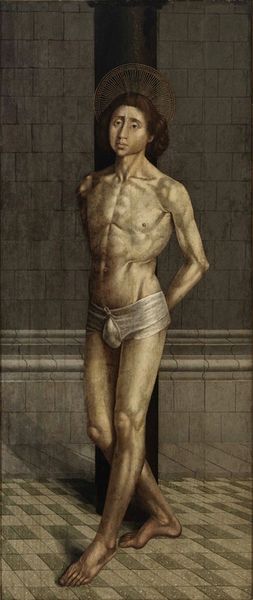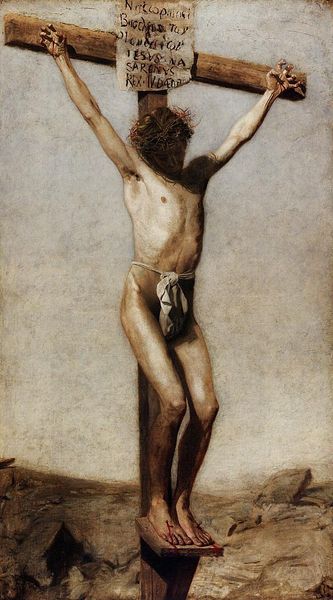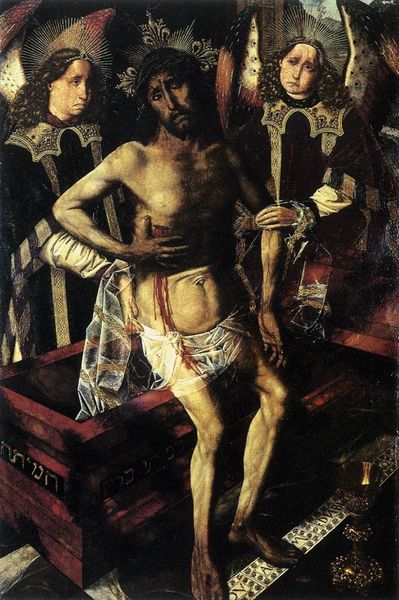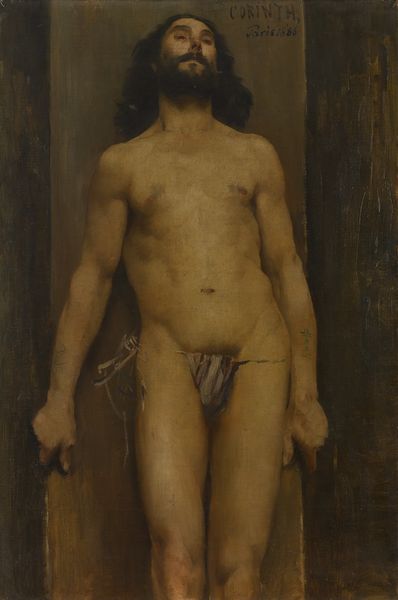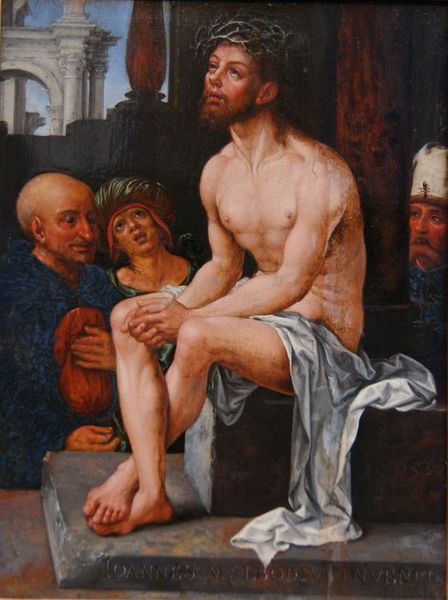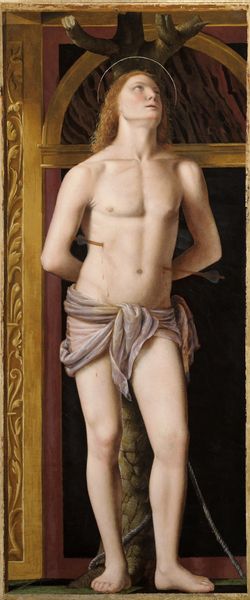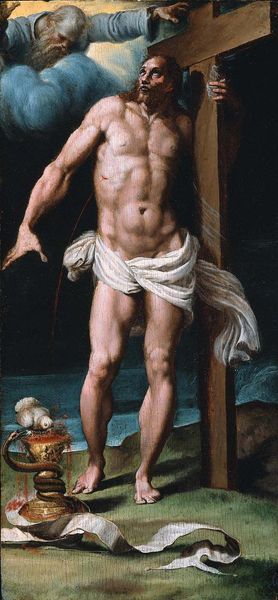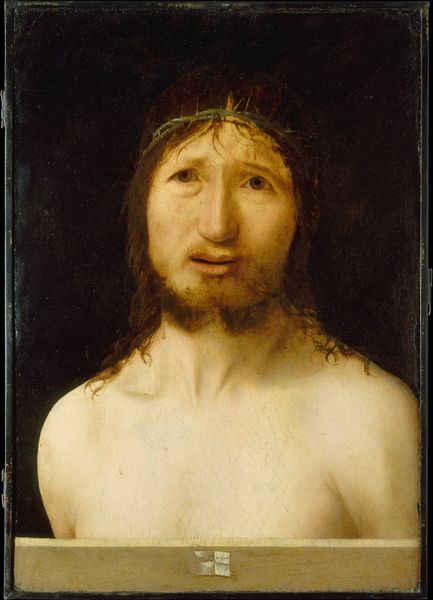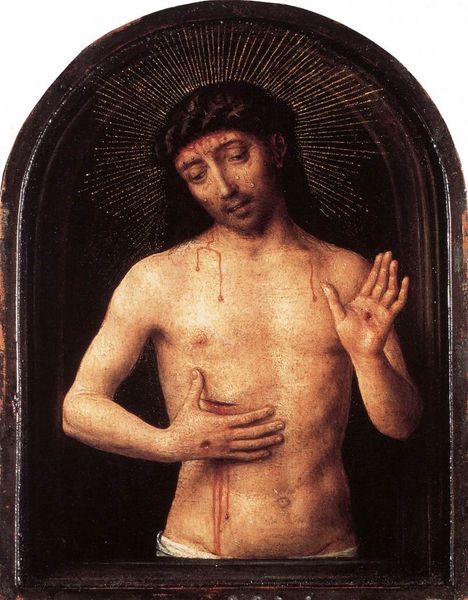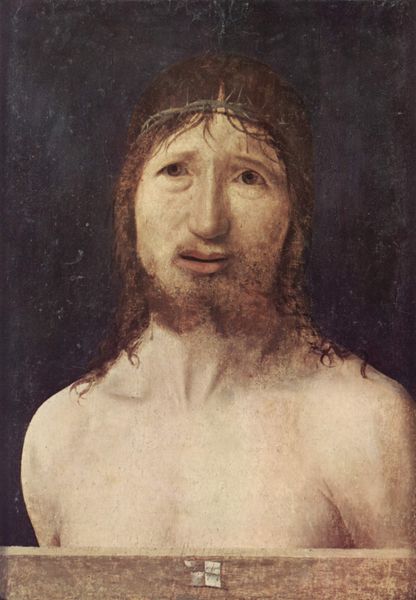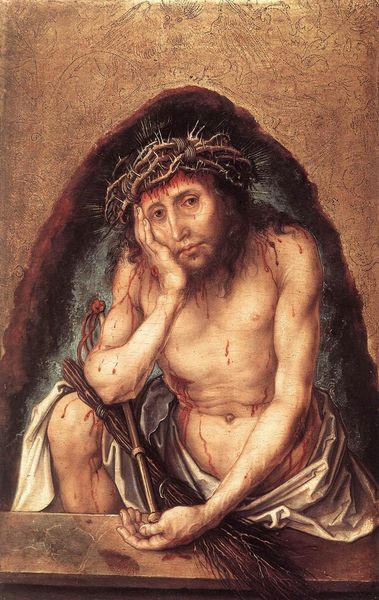
painting, oil-paint
#
painting
#
oil-paint
#
figuration
#
oil painting
#
history-painting
#
italian-renaissance
Dimensions: 59 x 34.5 cm
Copyright: Public domain
Editor: Hans Memling’s "Christ at the Column," created around 1490 using oil paint, is incredibly striking. I’m really drawn to the textures he's created. How do you read the significance of his material choices? Curator: Well, consider the socio-economic conditions under which this painting was produced. Oil paint itself was becoming increasingly prevalent, shifting away from tempera. This reflects changing trade routes and availability of materials, allowing for a different kind of luminosity and detail. The detailed depiction of Christ's suffering speaks to a wealthy patron who was interested in conspicuous religious devotion. Editor: That makes sense. The details are quite intricate, almost obsessively so. So the material supports the display of piety. Curator: Precisely. Consider also the support; it's painted on a wood panel, demanding careful labor. The artist and their workshop would have invested significant time into preparing the surface to ensure the oil paint adhered correctly, guaranteeing the longevity of their art for the elite market. Editor: It’s easy to forget the labor involved when you just see the finished piece hanging on a wall. I hadn’t thought about that aspect. Curator: This wasn't mass production, but a high-end commission. The scale and realism made possible by Memling’s mastery with oil paint contributed to a powerful, individualized devotional experience that reinforced hierarchies and social distinctions. It’s art consumed as a valuable commodity. Editor: Thinking about it that way, it adds a layer of meaning I hadn't considered before. Thanks! Curator: Exactly. It forces us to recognize artistic skill as a type of specialized manual labor employed by religious narrative and ideology, and to value that making.
Comments
No comments
Be the first to comment and join the conversation on the ultimate creative platform.
